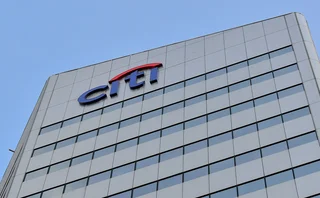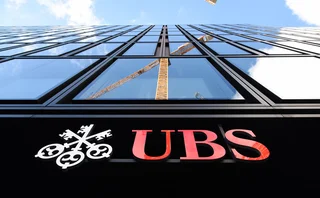
$700bn Tarp might only take equity in healthy banks, hints US Treasury
As well as buying up mortgage-backed securities, the US Treasury’s $700 billion rescue facility - the Troubled Asset Relief Programme (Tarp) will be used to buy equity in a variety of financial institutions. However, Tarp will be "designed with attractive terms to encourage participation from healthy institutions," according to the treasury official overseeing the initiative.
Speaking before the Institute of International Bankers in Washington DC on October 13, interim assistant secretary for financial stability Neel Kashkari also urged financial institutions to seek private sources of capital to compliment public funds.
Kashkari added that a team focusing specifically on MBSs is “identifying which assets to purchase, from whom to buy them and [are working on] designing the detailed auction” process that will establish a price for the troubled assets.
Kashkari did not say whether the auction process will establish one blanket price for MBSs regardless of the underlying mortgage portfolio and the tranche structure in question, or whether securities will simply be sold to the highest bidder at auction.
He did go on to note, however, that the Treasury is keen to see small businesses, especially those run by “veterans…minorities and…women”, seeking to compete for the contracts in question, although initial proposals will limit bids to those from asset managers with at least $100 billion in fixed income assets under management.
Some details were provided on the private sector firms who will be involved in the Tarp. Chicago-based investment advisory Ennis Knupp & Associates was selected as investment management consultant, while New York law firm Simpson & Bartlett will advise on the structuring of the equity programme. Kashkari added that the master custodian, securities asset manager and whole loan asset manager would be selected within the next few days.
Kashkari also confirmed a number of interim appointments at the office of financial stability, which was established specifically to manage the Tarp facility. Tom Bloom, chief financial officer (CFO) at the Office of the Comptroller of the Currency, will fulfil the role of interim CFO at the new office.
Jonathan Fiechter, deputy director of the monetary and capital markets department at the International Monetary Fund, will act as interim chief risk officer. Donna Gambrell, director of the Community Development Financial Institutions Fund, joins as interim chief of homeownership preservation, while Don Hammond, deputy director of the operations and payment systems division at the Federal Reserve Bank, will be the interim chief compliance officer.
Finally, Reuben Jeffrey, under secretary of state for economic affairs, will act as interim chief investment officer.
The details emerged on a day that saw European countries pledge as much as €1.8 trillion to guarantee loans and take equity positions in Eurozone banks, while the UK independently committed £37 billion to buy large equity stakes in domestic banks HBOS, Royal Bank of Scotland and Lloyds TSB.
In New York trading, the Dow Jones Industrial Average experienced its biggest one-day rally since 1933, gaining 936 points to end the day at 9387 points.
Among the stocks driving up US capital markets was Morgan Stanley, which climbed 86% from Friday’s low to reach $17.92, after Japanese bank Mitsubishi UFJ finalised its $9 billion investment in the former investment bank, in exchange for a 21% stake in the firm. Market analysts had speculated Mitsubishi could pull out of the deal after Morgan Stanley lost approximately 60% of its market value in volatile trading last week.
See also: Eurozone governments unveil details of rescue plans
Paulson picks GS alumnus to run bailout
Only users who have a paid subscription or are part of a corporate subscription are able to print or copy content.
To access these options, along with all other subscription benefits, please contact info@risk.net or view our subscription options here: http://subscriptions.risk.net/subscribe
You are currently unable to print this content. Please contact info@risk.net to find out more.
You are currently unable to copy this content. Please contact info@risk.net to find out more.
Copyright Infopro Digital Limited. All rights reserved.
You may share this content using our article tools. Printing this content is for the sole use of the Authorised User (named subscriber), as outlined in our terms and conditions - https://www.infopro-insight.com/terms-conditions/insight-subscriptions/
If you would like to purchase additional rights please email info@risk.net
Copyright Infopro Digital Limited. All rights reserved.
You may share this content using our article tools. Copying this content is for the sole use of the Authorised User (named subscriber), as outlined in our terms and conditions - https://www.infopro-insight.com/terms-conditions/insight-subscriptions/
If you would like to purchase additional rights please email info@risk.net
More on People
People: Isda taps four new directors, O’Callaghan joins CA, Berlinski quits Goldman, and more
Latest job changes across the industry
People: Citi snags Raghavan, SocGen bags Estrada, all change at NYCB, and more
Latest job changes across the industry
Kane to leave Citadel Securities for senior Miax role
Options exchange has been on a four-year acquisition spree
Asia moves: senior hires at Millennium, Citi, SMBC and more
Latest job news from across the industry
Ken Pang set to join Millennium as Asia equities head
Former Credit Suisse markets co-head joins hedge fund’s Hong Kong office
People: Risk shake-up at Santander, JPM juggles markets, and more
Latest job changes across the industry
People: UBS rejigs EQD, risk head departs; Rustad joins buy side, and more
Latest job changes across the industry
Rustad re-emerges at Taula Capital
Former JP Morgan clearing head to help prepare for Q2 fund launch
Most read
- Top 10 operational risks for 2024
- Japanese megabanks shun internal models as FRTB bites
- Top 10 op risks: third parties stoke cyber risk







